
Understanding WPC Wall Panel Grades: Choosing the Right Quality

Walk into any modern home or commercial space, and you'll likely spot the warm, natural appeal of WPC wall panels. As a staple in interior decoration materials , these panels have revolutionized how we design spaces—blending the beauty of wood with the resilience of plastic. But here's the catch: not all WPC panels are created equal. As a trusted wpc wall panel supplier , we've seen firsthand how misunderstanding grades leads to projects falling short of expectations. Whether you're a homeowner tackling a renovation or a contractor sourcing materials for a commercial build, knowing how to decode WPC wall panel grades is the first step toward making an informed choice. Let's dive into what grades really mean, how they're determined, and how to pick the perfect fit for your project.
What Are WPC Wall Panels, Anyway?
Before we jump into grades, let's get back to basics. WPC, or Wood-Plastic Composite, is exactly what the name suggests: a blend of wood fiber (or bamboo, rice husk, or other plant-based fibers) and plastic polymers, bound together with additives like UV stabilizers, colorants, and fire retardants. This fusion creates a material that's resistant to moisture, pests, and warping—problems that plague traditional wood panels. It's no wonder WPC has become a go-to for both residential and commercial projects: it's low-maintenance, eco-friendly (many use recycled materials), and versatile enough to mimic everything from oak to teak.
But here's where wpc wall panel solutions get nuanced. The ratio of wood to plastic, the quality of raw materials, and the manufacturing process all play a role in determining a panel's performance. That's where grades come in—they're a shorthand for quality, helping buyers quickly gauge if a panel is suited for a high-moisture bathroom, a busy office lobby, or a budget-friendly home renovation.
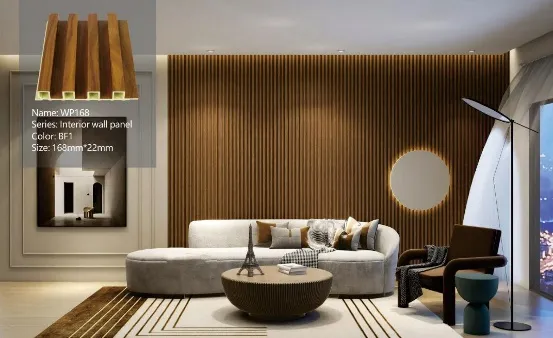
The Building Blocks of WPC Grades: What Defines Quality?
Think of WPC grades as a report card for panels. Just like a student's grade reflects their performance, a panel's grade is a summary of its material quality, durability, and suitability for specific uses. Here are the key factors that set grades apart:
1. Material Composition: The Wood-Plastic Ratio
At the heart of every WPC panel is the balance between wood fiber and plastic. Higher-grade panels often use a higher percentage of wood fiber (50-70%) for a more natural texture and better structural integrity. Lower grades may skimp on wood fiber, replacing it with cheaper fillers like calcium carbonate, which can make panels brittle. The type of plastic matters too: virgin plastic (new, unused) offers better consistency than recycled plastic, though eco-conscious suppliers now blend recycled plastic into mid-grade panels without sacrificing quality.
2. Density: The "Heft" Test
Density, measured in grams per cubic centimeter (g/cm³), is a telltale sign of quality. High-grade panels have a density of 1.2–1.4 g/cm³, making them feel solid and heavy in hand. Lower grades might hover around 0.7–0.9 g/cm³, feeling lighter and less substantial. Why does this matter? Higher density means better resistance to impacts, scratches, and moisture—critical for high-traffic areas.
3. Additives: The Unsung Heroes
Additives are the secret sauce that elevates a panel from "basic" to "premium." UV stabilizers prevent fading in sunlight, fire retardants make panels safer for commercial spaces, and antimicrobial agents inhibit mold growth in humid environments. Grade A panels are loaded with these additives, while lower grades may skip them to cut costs—leaving panels vulnerable to discoloration or decay over time.
4. Manufacturing Precision
Even the best materials can fail with shoddy manufacturing. High-grade panels are extruded under strict temperature and pressure controls, ensuring uniform thickness and density. You'll notice smooth edges, consistent color, and minimal warping. Lower-grade panels, on the other hand, may have rough surfaces, uneven coloring, or visible air bubbles—signs of rushed production.
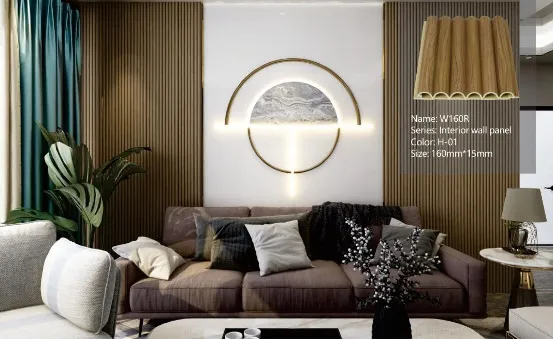
Decoding the Grades: Grade A, B, and C Explained
Now that we know what defines quality, let's break down the most common grades you'll encounter. While terminology varies slightly between suppliers, these three categories cover the spectrum from premium to budget-friendly.
| Grade | Material Composition | Density (g/cm³) | Water Resistance | Durability | Best For | Price Range (per sq.m) |
|---|---|---|---|---|---|---|
| Grade A | 60-70% Virgin Wood Fiber, 25-35% Virgin Plastic, 5-10% Premium Additives | 1.2–1.4 | Excellent (<2% water absorption) | 15–20 years (residential), 10–15 years (commercial) | High-moisture areas (bathrooms, kitchens), commercial lobbies, high-traffic zones | $35–$50 |
| Grade B | 50-60% Mixed Wood Fiber, 30-40% Mixed (Virgin/Recycled) Plastic, 5-8% Standard Additives | 0.9–1.1 | Good (<5% water absorption) | 10–15 years (residential), 7–10 years (commercial) | Living rooms, bedrooms, home offices, low-traffic commercial spaces | $25–$35 |
| Grade C | 40-50% Recycled Wood Fiber, 45-55% Recycled Plastic, Minimal Additives | 0.7–0.8 | Fair (<8% water absorption) | 5–8 years (residential), 3–5 years (commercial) | Temporary installations, accent walls, budget-friendly renovations | $15–$25 |
Grade A: The Premium Performer
Grade A panels are the gold standard. Made with top-tier materials—virgin plastic, high-quality wood fiber, and a robust blend of additives—they're designed to withstand the toughest conditions. Walk into a luxury hotel bathroom or a busy restaurant kitchen, and chances are you're looking at Grade A WPC. Their high density (1.2–1.4 g/cm³) makes them resistant to dents and scratches, while their low water absorption (<2%) means they won't swell or rot in humid environments. They also hold up well to UV exposure, so they're a solid choice for sunrooms or spaces with large windows.
As a commercial building materials supplier , we often recommend Grade A for projects where durability is non-negotiable. Yes, they come with a higher price tag ($35–$50 per sq.m), but their longevity means lower replacement costs over time. Think of it as an investment: a Grade A panel in a hotel lobby will still look fresh after a decade of foot traffic, whereas a lower grade might start showing wear in half that time.
Grade B: The Balanced Workhorse
Grade B is where quality and affordability meet. These panels use a mix of virgin and recycled materials, with enough additives to ensure decent performance without breaking the bank. They're dense enough (0.9–1.1 g/cm³) for most residential needs and hold up well in dry to moderately humid spaces like living rooms, bedrooms, or home offices. Water absorption is around 3–5%, so while they're not ideal for showers, they'll handle the occasional spill in a kitchen or laundry room.
For residential building materials supplier clients, Grade B is often the sweet spot. At $25–$35 per sq.m, it offers the natural look of wood without the maintenance headaches of real timber. We've seen homeowners use it to create accent walls, wainscoting, or even ceiling cladding—proving that you don't need to splurge on Grade A to achieve a polished finish.
Grade C: The Budget-Friendly Option
Grade C panels are the most affordable, typically ranging from $15–$25 per sq.m. They rely heavily on recycled materials and minimal additives, which keeps costs low but impacts performance. With a density of 0.7–0.8 g/cm³, they're lighter and more prone to scratches, and water absorption can climb to 8% or higher. That said, they have their place: temporary installations (like pop-up shops), rental properties, or DIY projects where aesthetics matter more than long-term durability.
We caution clients against using Grade C in high-moisture or high-traffic areas—we've seen panels warp in bathrooms or fade in sunny rooms within a few years. But for a quick, budget-friendly refresh (think: a teenager's bedroom or a home studio), they can be a viable choice. Just manage expectations: you'll likely need to replace them sooner than higher grades.
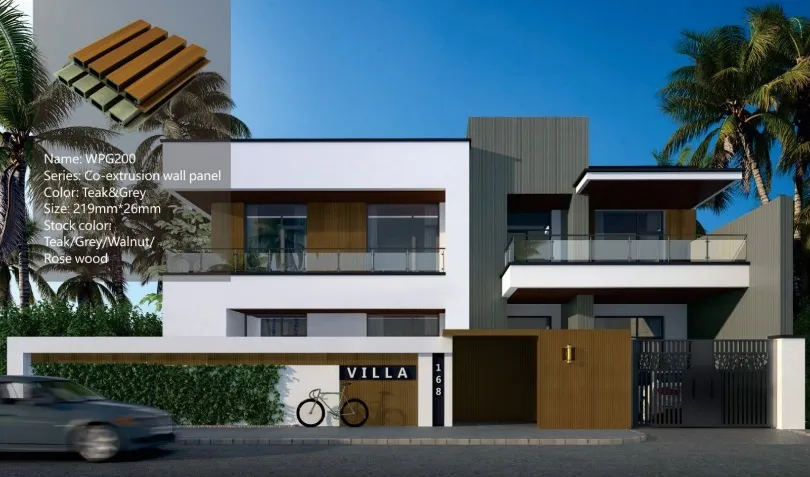
How to Spot Quality: 5 Tips for Identifying Grades
Not all suppliers label grades clearly, so it's up to you to play detective. Here's how to separate the Grade A gems from the Grade C duds:
1. Check the Weight
Pick up a panel and feel its heft. Grade A panels should feel solid—if it's surprisingly light, it's likely a lower grade. For reference, a standard 1m x 0.25m Grade A panel weighs around 3–4kg, while a Grade C panel of the same size might weigh 1.5–2kg.
2. Inspect the Surface
Run your hand along the panel. High-grade panels have a smooth, consistent texture with no visible air bubbles, cracks, or uneven coloring. Lower grades may have rough edges, blotchy patterns, or faint lines from shoddy extrusion.
3. Ask for Certifications
Reputable suppliers will provide certificates for density, water resistance, and fire ratings. Look for ISO 9001 (quality management) or CE marks, which indicate compliance with European standards. For commercial projects, ask about fire retardancy certifications—Grade A panels often meet Class B or higher fire ratings.
4. Do a Water Test (If Possible)
If you're unsure about water resistance, request a small sample and submerge it in water for 24 hours. Grade A panels will absorb less than 2% of their weight, while Grade C may swell noticeably. Just be sure to dry it thoroughly afterward to avoid damaging the sample!
5. Talk to the Supplier
A trustworthy wpc wall panel supplier will be transparent about grades. Ask questions like, "What's the wood-to-plastic ratio?" or "Do these panels contain UV stabilizers?" If they dodge specifics or can't provide material specs, it's a red flag. At our company, we provide detailed datasheets for every product—because we believe informed clients are happy clients.
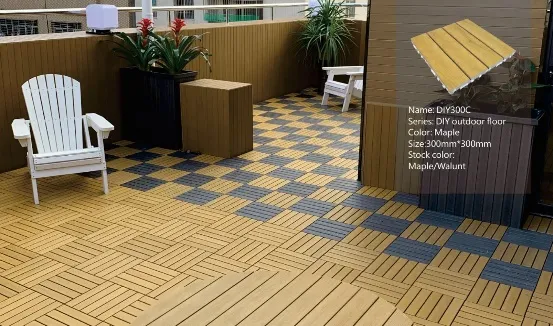
Choosing the Right Grade: It's All About Your Project
There's no "one-size-fits-all" grade—what works for a luxury hotel might be overkill for a small apartment. Here's how to match grades to project types:
Residential Projects
For most homes, Grade B is ideal. It balances durability and cost, handling daily wear and tear without the premium price. If you're installing panels in a bathroom or kitchen, spring for Grade A to avoid moisture damage. For accent walls or low-traffic areas (like a home library), Grade B (or even Grade C, if you're on a tight budget) will do the trick.
Commercial Projects
Commercial spaces demand Grade A. Think about a restaurant kitchen: steam, spills, and constant cleaning would quickly degrade lower grades. Similarly, hotel lobbies and office receptions see hundreds of visitors daily—Grade A's scratch resistance ensures the panels stay looking new. We once worked with a café that tried Grade B in their dining area; within a year, the panels near the entrance had visible scuffs, requiring a costly replacement. Lesson learned: in commercial settings, skimping on grade costs more in the long run.
Specialty Projects
For unique applications—like outdoor patios (yes, some WPC panels are UV-treated for exterior use) or high-fire-risk areas (schools, hospitals)—look for specialized wpc wall panel solutions . These may include Grade A panels with enhanced fire retardants or extra-thick UV stabilizers, ensuring compliance with strict building codes.
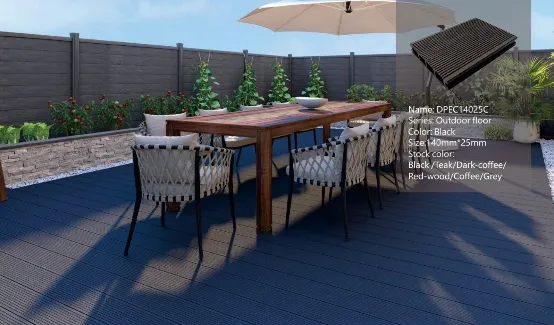
Myth Busting: Common Misconceptions About WPC Grades
Even seasoned buyers fall prey to these myths—let's set the record straight:
Myth 1: "Higher Price = Better Grade"
Not always. Some suppliers inflate prices based on brand name or trendy finishes, not actual quality. Always cross-check price with material specs (density, additives, certifications) to ensure you're paying for performance, not marketing.
Myth 2: "All WPC Panels Are Waterproof"
Water- resistant , not waterproof. While WPC holds up better than wood in moisture, Grade C panels can still warp if exposed to standing water. Always check the water absorption rate—anything over 5% is risky for humid spaces.
Myth 3: "Grade C Is 'Bad' Quality"
It's all about context. Grade C is perfect for projects where cost or temporary use is the priority. The "bad" choice is using Grade C in a space that demands Grade A performance.
Final Thoughts: Invest in the Right Grade for Peace of Mind
At the end of the day, WPC wall panel grades are about matching quality to purpose. Whether you're a homeowner dreaming of a cozy living room or a contractor managing a commercial build, taking the time to understand grades ensures your project looks great and lasts longer. As a wpc wall panel supplier , we're here to help you navigate the options—offering tailored wpc wall panel solutions that align with your goals, budget, and vision.
Remember: a panel's grade isn't just a label—it's a promise of performance. Choose wisely, and you'll enjoy a space that's both beautiful and built to last.
Tags:
Recommend Products










